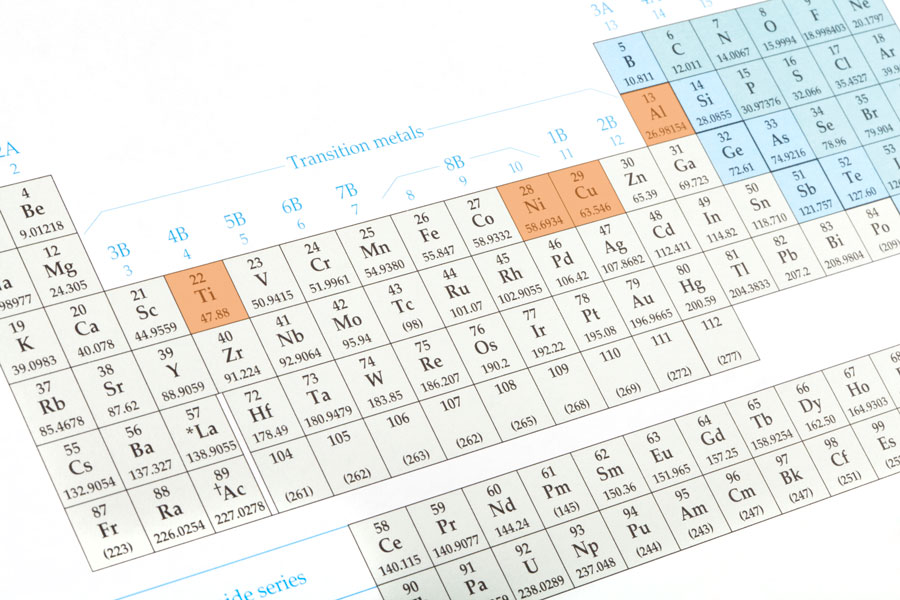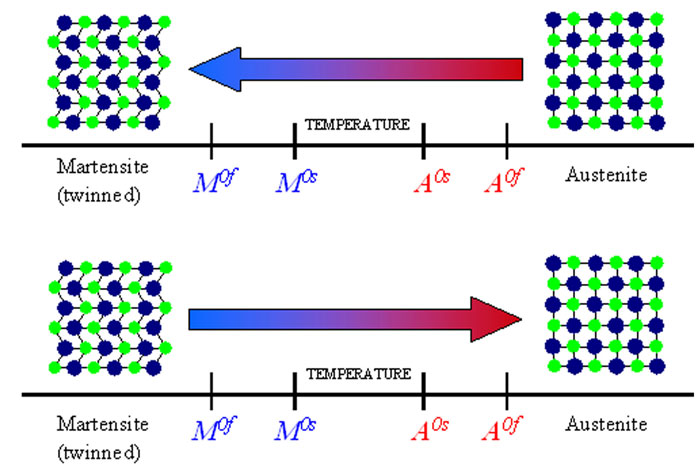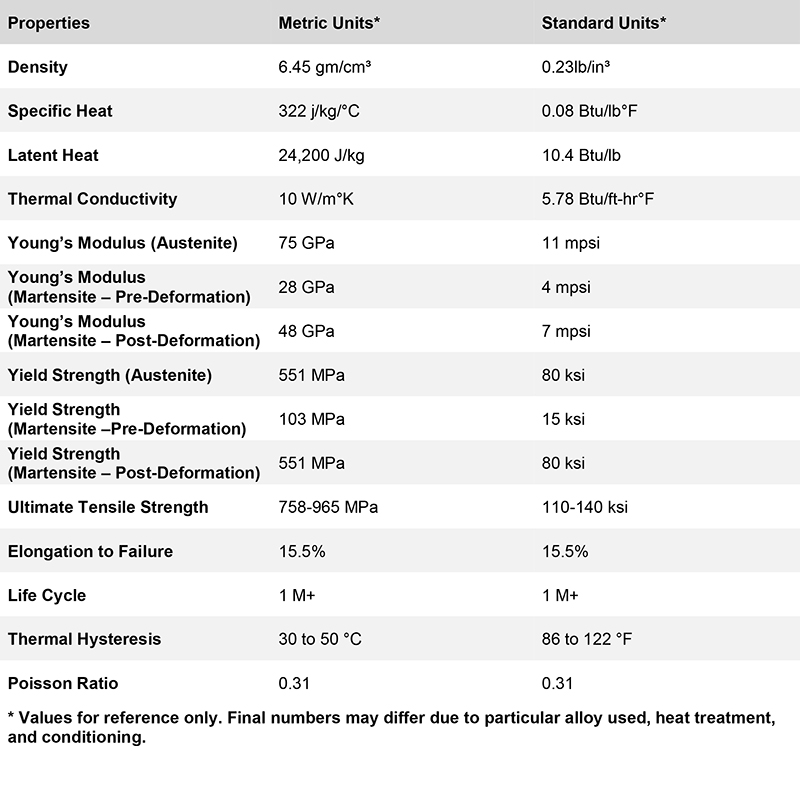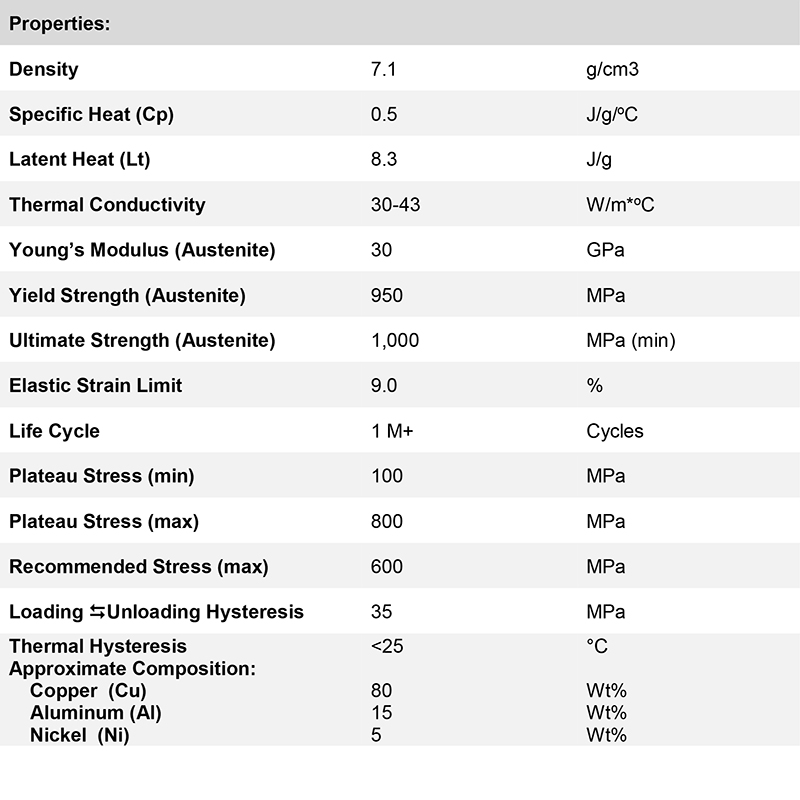
Shape Memory Alloy
SHAPE MEMORY ALLOYS (SMAs) refer to a group of materials that have the ability to return to a predetermined shape when heated. The shape memory effect is caused by a temperature dependent crystal structure. When an SMA is below its phase transformation temperature, it possesses a low yield strength crystallography referred to as Martensite (see Stress-Strain figure). While in this state, the material can be deformed into other shapes with relatively little force. The new shape is retained, provided the material is kept below its transformation temperature. When heated above this temperature, the material reverts to its parent structure, known as Austenite, causing it to return to its original shape (see Phase Transformation figure).



TiNi™ ALLOY SPECIFICATION
The most widely used shape memory material is an alloy of Nickel and Titanium called Nitinol. This particular alloy is commercially available and has the following characteristics:
-
- Excellent mechanical properties
- Capable of long fatigue life
- May be joule heated
- High Corrosion Resistance
As an actuator, it is capable of up to 4% strain and 50,000 psi recovery stress, resulting in approximately 1 joule/gm of work output. Nitinol is readily available in the form of wire, rod, and bar stock with transformation temperature in the range of -100° to +100° Celsius.
CuAINi ALLOY SPECIFICATION
SCSMA is a remarkable material manufactured by EBAD from Copper, Aluminum, and Nickel (Cu-Al-Ni). This alloy exhibits significantly enhanced performance over commercially available SMAs. These include:
-
- Significantly greater strain recovery (9% vs. 3%)
- Much higher transition temperature capability (250°C vs.100°C)
- True constant force deflection
- Very narrow loading hysteresis
- Recovery which is 100% repeatable and complete
SCSMAs are manufactured by “growing” as a single crystal from a melt, by a similar method as that used by the semiconductor industry to fabricate silicon boules. The “grown” material is generally fabricated as a rod but can have a range of cross sections (i.e., solid, hollow, flat, or oval). The material can also be subsequently formed into other shapes by traditional fabrication methods such as grinding, machining, or EDM (Electro-Discharge-Machining).


